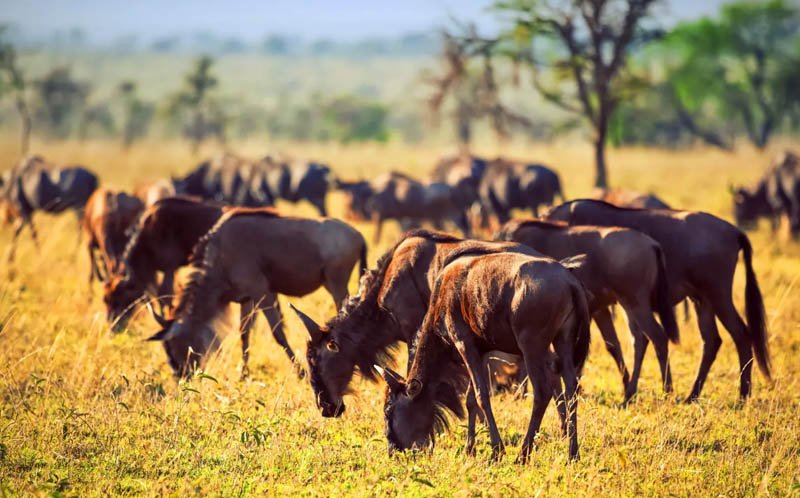Nyerere National Park
Nyerere National Park: Africa’s Largest Wildlife Sanctuary
Nyerere National Park, formerly part of the Selous Game Reserve, is the largest national park in Africa, covering an area of 30,893 square kilometers (11,928 square miles). Located in southern Tanzania, this vast wilderness is a UNESCO World Heritage Site and one of the most important protected areas in Africa. The park is famous for its diverse wildlife, unspoiled landscapes, and the mighty Rufiji River, which supports a rich ecosystem and offers unique safari experiences.
Wildlife and Biodiversity
Nyerere National Park is home to some of Africa’s most impressive wildlife populations. Visitors can expect to see:
- The Big Five – Lions, elephants, buffaloes, leopards, and rhinoceroses
- Large packs of African wild dogs – One of the last strongholds for this endangered species
- Hippos and crocodiles in the Rufiji River
- Giraffes, zebras, impalas, elands, and hartebeests roaming the open savannas
- Over 440 bird species, including fish eagles, kingfishers, and the rare Pel’s fishing owl
Unlike the crowded parks in northern Tanzania, Nyerere National Park offers an exclusive and authentic safari experience, with fewer tourists and untouched wilderness.
Geography and Climate
The park’s landscapes are diverse, ranging from:
- Open savannas that support large herds of herbivores
- Dense woodlands that provide shelter for predators
- Swamps and wetlands rich in birdlife and aquatic animals
- The Rufiji River, Tanzania’s largest river, which forms oxbow lakes and channels teeming with wildlife
The climate in Nyerere National Park is tropical, with a wet season from November to May and a dry season from June to October. The dry season is the best time for wildlife viewing, as animals gather around water sources, while the wet season offers lush landscapes and excellent birdwatching.
Tourism and Activities
Nyerere National Park provides a variety of unique safari experiences, including:
- Game Drives – Explore the vast landscapes and encounter diverse wildlife.
- Boat Safaris – Cruise along the Rufiji River and observe hippos, crocodiles, and birds from a different perspective.
- Walking Safaris – Led by expert guides, these safaris offer an up-close experience of the African bush.
- Birdwatching – A paradise for bird lovers, with hundreds of species found near water bodies and in woodlands.
- Fly Camping – A true wilderness experience where visitors sleep in mobile tents under the stars.
Unlike the northern parks, Nyerere offers a more relaxed and off-the-beaten-path safari experience, perfect for travelers looking for something different.
Conservation and Protection
Nyerere National Park is named after Julius Nyerere, Tanzania’s founding president and a champion of conservation. The park is managed by Tanzania National Parks Authority (TANAPA), focusing on:
- Anti-poaching efforts to protect elephants and rhinos
- Sustainable tourism to balance conservation and visitor experience
- Community involvement to promote wildlife conservation among local people
Being a UNESCO World Heritage Site, the park is vital for preserving Africa’s last great wilderness areas and ensuring the survival of endangered species.





